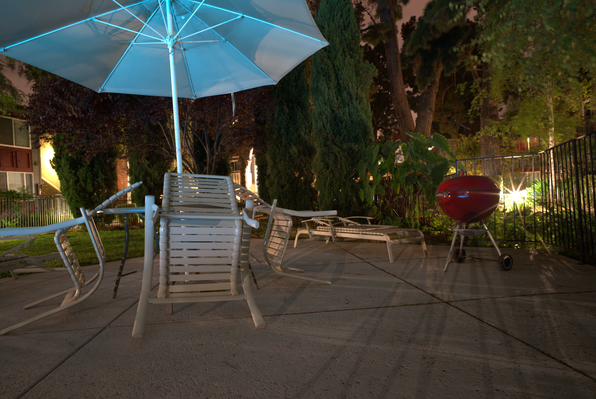Learning to See in the Dark
Imaging in low light is challenging due to low photon count and low SNR. Short-exposure images suffer from noise, while long exposure can induce blur and is often impractical. A variety of denoising, deblurring, and enhancement techniques have been proposed, but their effectiveness is limited in extreme conditions, such as video-rate imaging at night. To support the development of learning-based pipelines for low-light image processing, we introduce a dataset of raw short-exposure low-light images, with corresponding long-exposure reference images. Using the presented dataset, we develop a pipeline for processing low-light images, based on end-to-end training of a fully-convolutional network. The network operates directly on raw sensor data and replaces much of the traditional image processing pipeline, which tends to perform poorly on such data. We report promising results on the new dataset, analyze factors that affect performance, and highlight opportunities for future work. The results are shown in the supplementary video at https://youtu.be/qWKUFK7MWvg
PDF Abstract CVPR 2018 PDF CVPR 2018 AbstractCode
| Task | Dataset | Model | Metric Name | Metric Value | Global Rank | Benchmark |
|---|---|---|---|---|---|---|
| Image Denoising | ELD SonyA7S2 x100 | Paired Data(SID) | PSNR (Raw) | 44.47 | # 7 | |
| SSIM (Raw) | 0.968 | # 7 | ||||
| Image Denoising | ELD SonyA7S2 x200 | Paired Data(SID) | PSNR (Raw) | 41.97 | # 7 | |
| SSIM (Raw) | 0.928 | # 7 | ||||
| Image Denoising | SID SonyA7S2 x250 | Paired Data (SID) | PSNR (Raw) | 39.60 | # 5 | |
| SSIM (Raw) | 0.938 | # 3 | ||||
| Image Denoising | SID x100 | SID (paired real data) | PSNR (Raw) | 42.06 | # 5 | |
| SSIM | 0.955 | # 4 | ||||
| Image Denoising | SID x300 | Paired Data(SID) | PSNR (Raw) | 36.85 | # 4 | |
| SSIM | 0.923 | # 3 |












 SID
SID
 ELD
ELD
